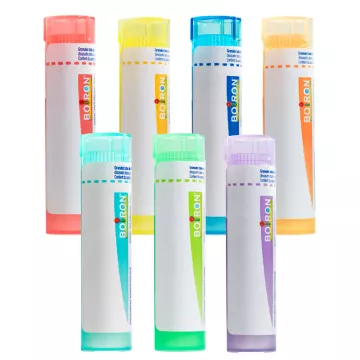
Panicitis is an infection not to be taken lightly. By knowing the symptoms, causes and preventive measures, you can act quickly to avoid complications. In case of doubt, medical advice is essential for appropriate treatment.
A panicitis is a painful skin infection that develops around the nail, usually following a minor injury such as a cut or prick. This condition, which often affects the fingers of the hand, can be superficial or deep, depending on the involvement of the skin, the nail bed, or even the underlying bone.
Signs of panicitis include redness, swelling and intense pain around the nail. An accumulation of pus can also be observed, highlighting the need for proper drainage to prevent the infection spreading.
Panaris is mainly caused by a bacterial infection, often due to Staphylococcus aureus. Small wounds around the nail create an entry point for bacteria, facilitating infection.
Treatment depends on the stage of the infection. Options include warm salt-water baths to reduce swelling, the application of antibiotic creams, and, in more severe cases, surgery to drain the abscess and remove infected tissue.
Prevention is based on good hand and nail hygiene, as well as immediate disinfection of small wounds around the nails. Avoiding nail biting or cuticle removal can also reduce the risk of infection.
It's crucial to consult a healthcare professional if the pain becomes unbearable, if the infection spreads, or if symptoms such as fever appear. This could indicate a deeper infection requiring specific treatment.
Untreated panariasis can lead to a number of serious complications. The infection can spread to adjacent tissues, leading to a more serious condition called phlegmon. In extreme cases, osteomyelitis, a bone infection, can develop if the infection reaches the bone beneath the nail. Hence the importance of early treatment to avoid these potentially dangerous outcomes.
Yes, children can be particularly vulnerable to panariasis, often due to their habit of biting their nails or scratching with dirty objects, making it easier for bacteria to enter the skin. It is therefore crucial to ensure good hand hygiene in the youngest children, and to encourage them not to bite their nails.
While some natural remedies, such as warm-water baths with Epsom salt, can help relieve pain and reduce inflammation, they should not replace medical advice, especially if the infection worsens. Natural remedies can be complementary, but are often not enough to eradicate the infection, especially in cases of advanced panariasis.
Panicitis is characterized by intense pain, swelling and often the presence of pus - signs that distinguish it from simple inflammation. If the inflammation is mild and pus-free, it may be a minor irritant reaction. On the other hand, rapidly increasing pain, the appearance of pus and heat around the nail are indicative of a panic attack.
For professionals such as doctors, nurses and manual workers, who are more likely to suffer hand injuries, wearing appropriate gloves and regular hand disinfection are essential. These preventive measures, combined with increased vigilance regarding any minor injury to the fingers, can significantly reduce the risk of developing panariasis.